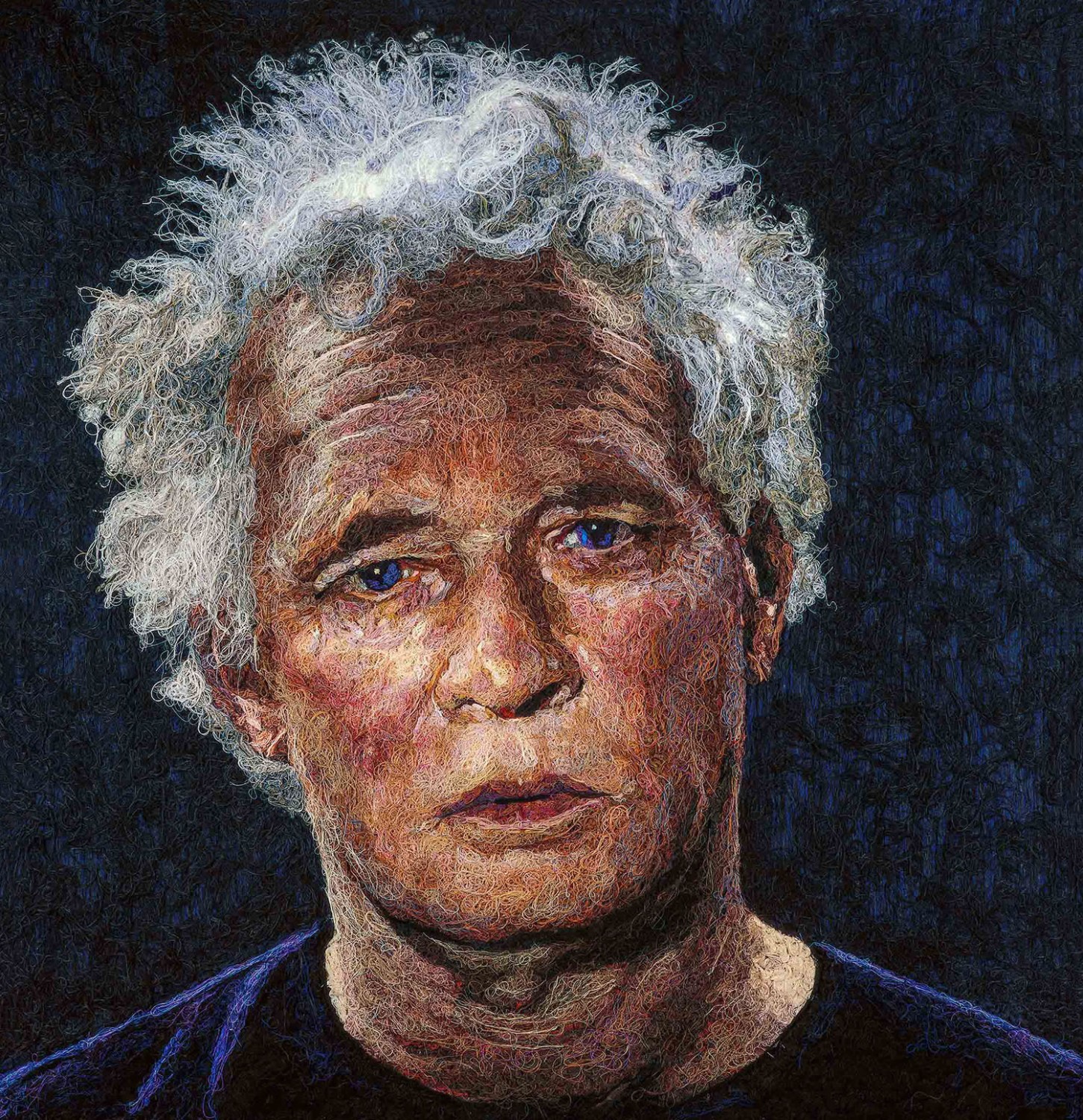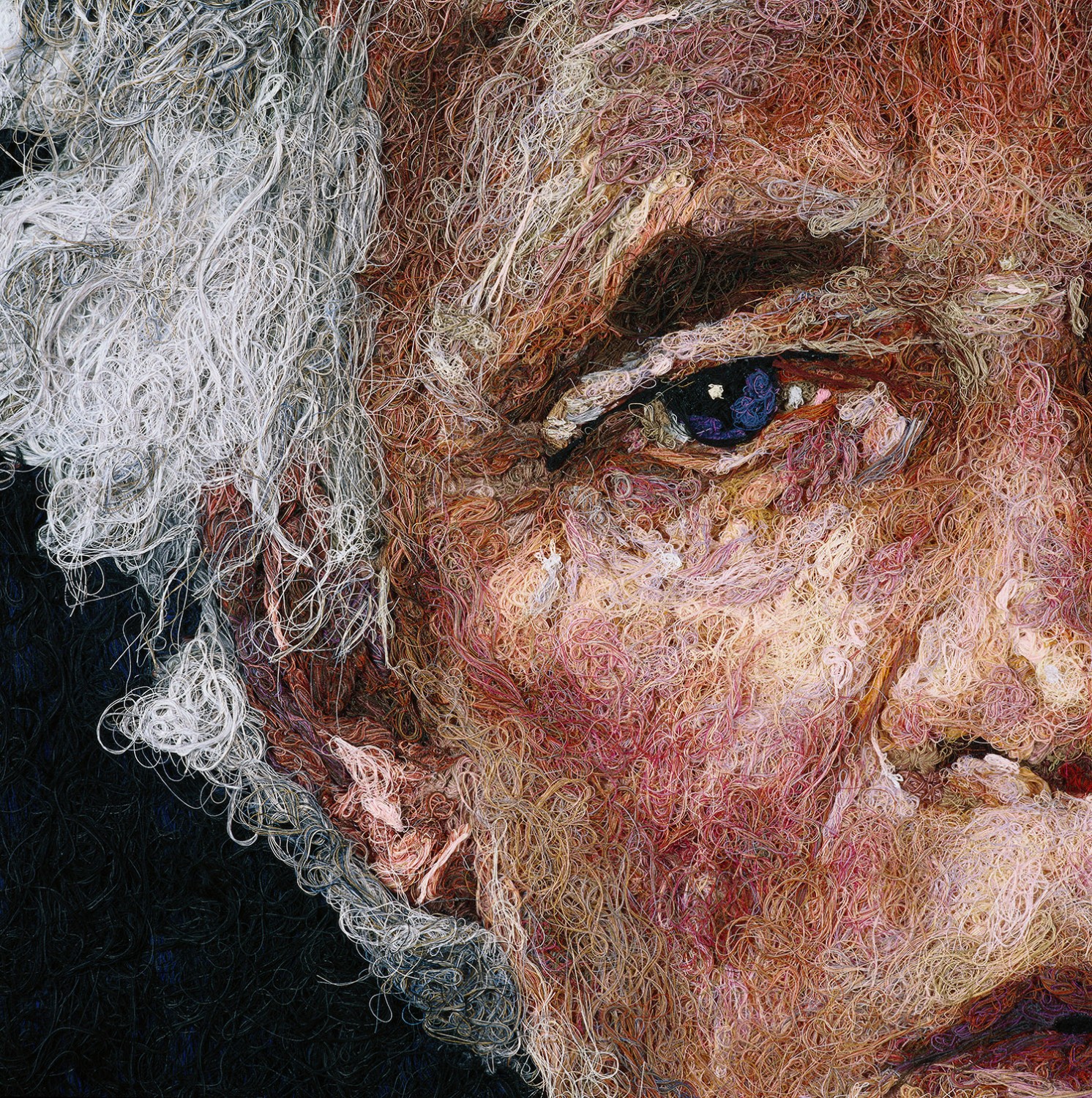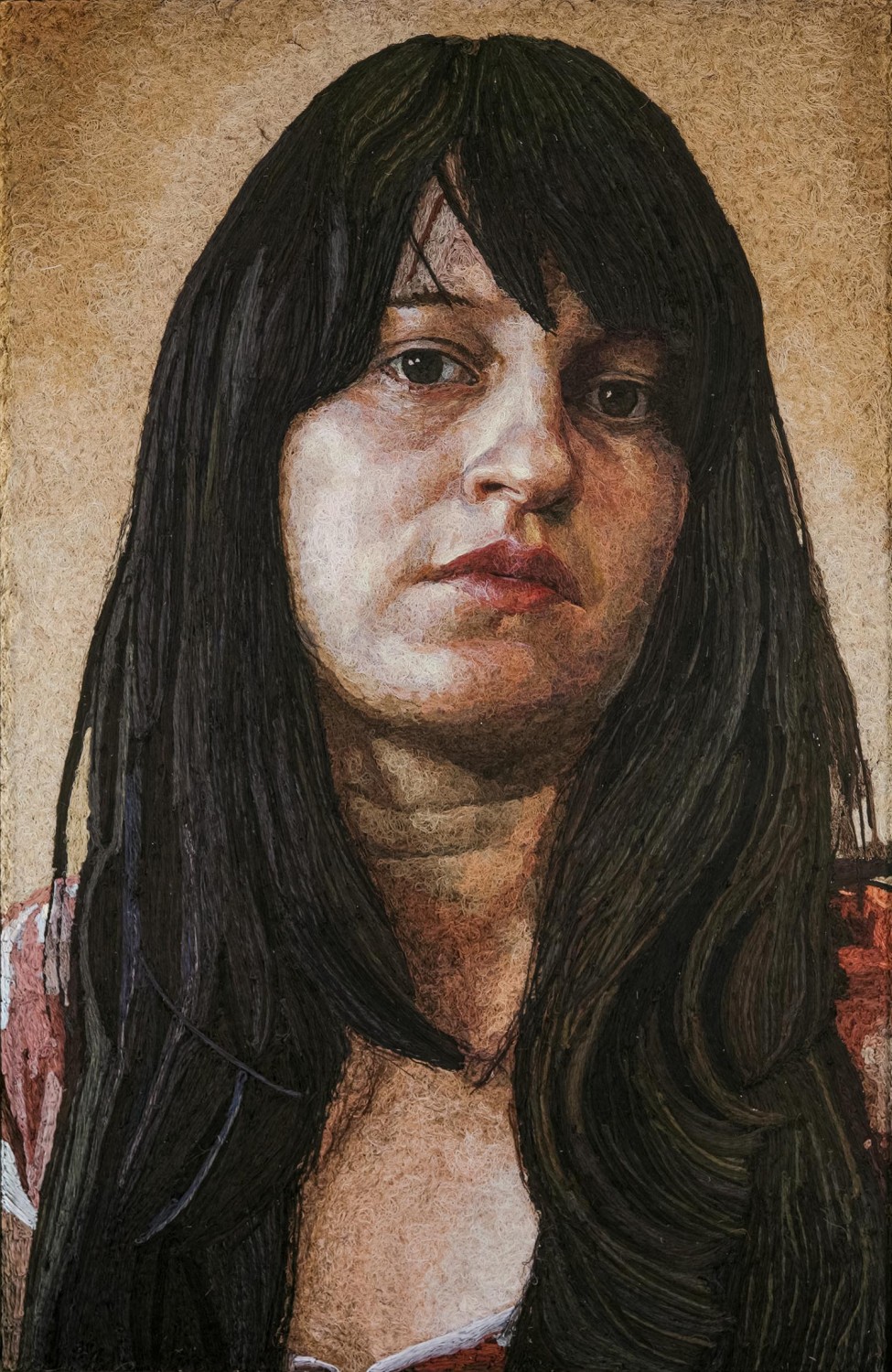A Portrait’s Weft
[...]
There are faces that we know well because we live with them, there are others that seem familiar to us due to their social relevance or continuous presence in the
media. Our manner of looking at them, drawing closer to them or understanding their expressions is very different. For Mondongo, the portrait has always implied
a search that goes beyond a simple representation of the face. In this selection of portraits, they delve deeper both into the enigma of the diverse faces the portrait
bears and into how to account for that diversity itself.
Not a single one of us possesses a face. Our face, just as our identity, is multiple, and that multiplicity is not simply resolved through showing different faces. As
Pessoa wrote “Everything in me tends to go on to become something else”
A face is a constant mutation, or continuity –a series of layer- faces that, like a weft of fabrics, interlace with earlier faces, become superimposed upon others, or sync up with later ones: a complex and intricate weft that resists unveiling its mystery through a single image. Just like the landscape, th
e face changes at each moment dependent upon the lighting, or mood or the passing of time, without ever ceasing to be the same, at least while it is alive. Death renders the face unrecognizable, distant, and empty, as if it no longer pertained to that person we knew.
...
The technique of strings emerged with the portrait of Kevin Power, and Mondongo then used it for the portraits of Enrique Fogwill, followed by Tom Pattchet. These three portraits, in my opinion, could form a sort of structural trilogy, in the sense of something akin to a tripod. They are portraits that, as it is in Fogwill’s case, give more of the person than just the image of their face. The sensation of united that is achieved in the portrait of Fogwill, for example, immediately gives way to new possibilities for reading into other personality dimensions of a psychological nature: nonconformist, complex, lucid, imaginative, radical, attractive... The attention to detail in the strands of hair, the eyes, mouth, or wrinkles on his face, the play on lights and the deep, light toned backgrounds serve to highlight, even furthermore, the presence of those three illuminated heads.
—Mónica Carballas, 2013
Retratos Íntimos, 2005























